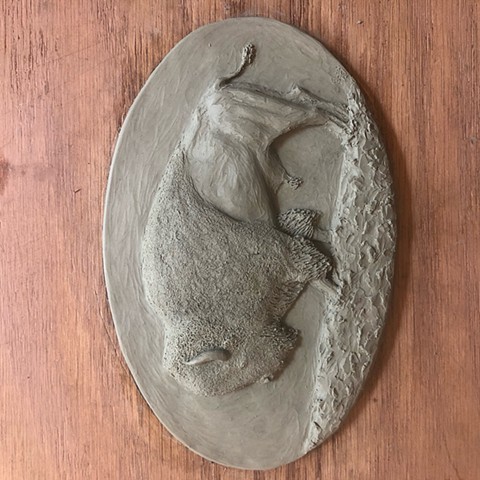Bison Master's Thesis Book
This art book was created as part of my master's thesis work at the University of Wyoming. The thesis was about the social issues surrounding bison migration out of Yellowstone National Park. As part of a truly interdisciplinary project, the intention of the book is to provide a physical connection to the bison through the sense of sight and touch.
The book is bound with blue stained bison leather and bison fur. This allows a reader to feel bison fur. The fur surrounds a bronze medallion representation of a bison that exhibits my abilities in sculpture, mold making, and stone setting with the eye of the bison being a flush set black diamond. The front and back cover are ringed with cold-riveted copper rivets with the footprint of a bison stamped on each rivet head. Inside, the book is lined with a map of the northern part of Yellowstone National Park. This is a nod to the area that the thesis is about and the map was my well loved map of the area I used for about a decade living in the area.
The text of the book features additional illustrations and layout design no featured in the version submitted to my committee and the university. It also includes a timeline that puts the human history of the Yellowstone area into context. From the first page to the last is a scale representation of 30,000 years. What is interesting is how all the white settler history is bunched up in about an inch or two of space. This is a direct challenge to the claims often made by ranching interests that they are "5th generation" which is used to give their opinion or views greater weight in decision making while ignoring 8,000 to 10,000 years of human presence before the arrival of their recently arrived ancestors and even more freshly arrived people.
Of course, five generations is not nothing either. And what the thesis begins to explore is the idea that this folks do have a deep and meaningful connection with the land and it is not same as the Native Peoples that lived there before the land was stolen and occupied. I think that if we begin to address this and the issues of settler colonial dominance over the land, animals, and Native people, conflicts and deep wounds can begin to be healed in a win-win-win situation where only developers lose out. It embraces the ideas of Albert Camus who struggled with similar issues as a French Algerian.









































